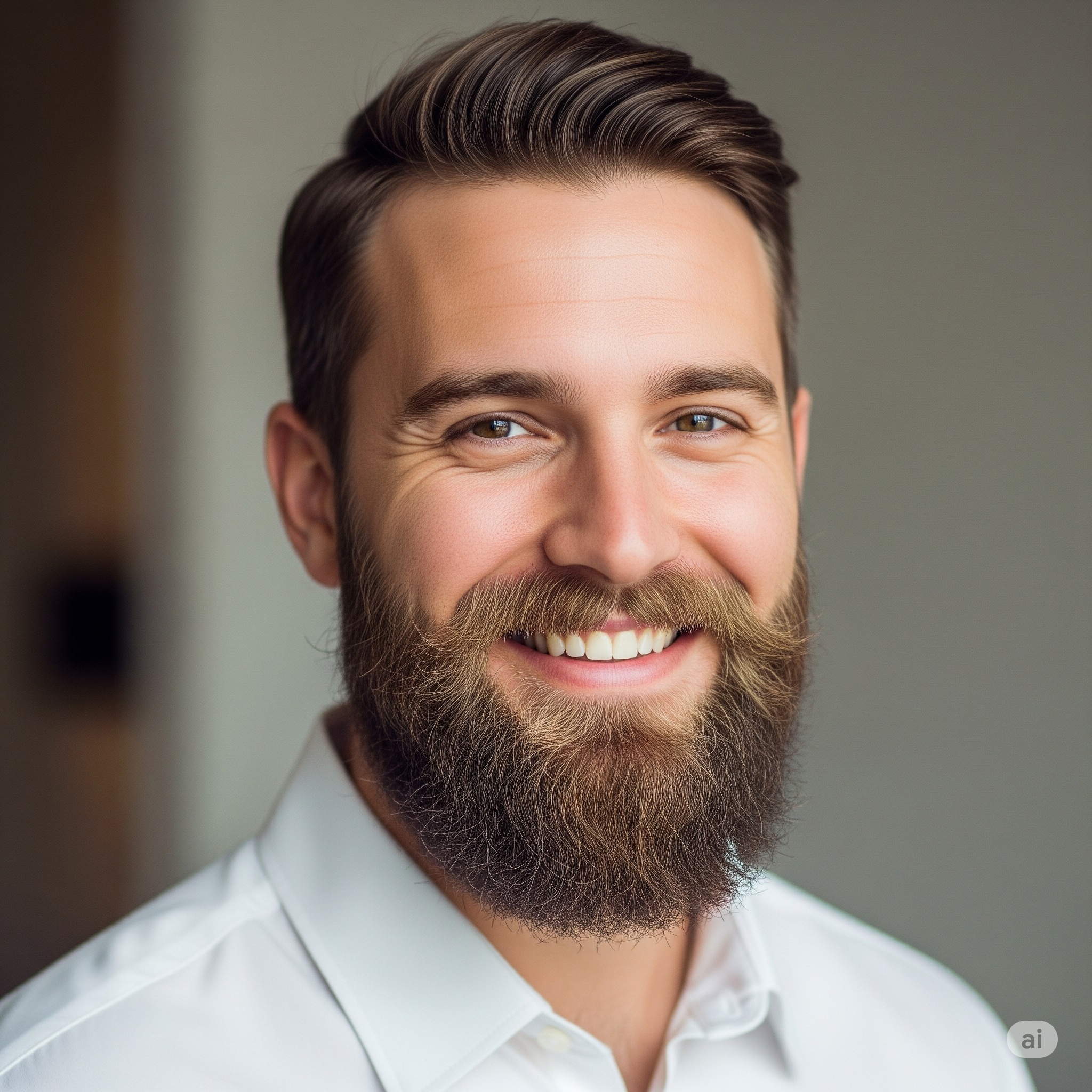Why Choose a Beard Transplant Abroad?
The desire for a full, well-defined beard is increasingly common. Unfortunately, many men struggle with patchy growth or a lack of facial hair due to genetics, scarring, or other factors. A beard transplant offers a permanent solution by restoring density and creating a natural-looking beard line. For many, traveling abroad for the procedure has become an attractive option. This is primarily because of the significant cost savings available in popular medical tourism destinations.
Furthermore, these countries have built reputations for having specialized clinics and highly skilled surgeons who perform these procedures frequently. They often provide all-inclusive packages that cover the surgery, accommodation, and transfers. Ultimately, this makes the entire process more convenient and stress-free for international patients. Consequently, it’s a great opportunity to combine a life-changing cosmetic procedure with a vacation.
Understanding the Beard Transplant Procedure
A beard transplant is a precise surgical procedure that transfers hair follicles from one part of the body, known as the donor area, to the face. The process typically uses hair from the back of the scalp, as these follicles are resistant to balding. First, the surgeon will carefully design the new beard line and determine the number of grafts needed. Then, the procedure itself begins.
The most common techniques used are Follicular Unit Extraction (FUE) and Direct Hair Implantation (DHI). During the FUE procedure, individual follicles are extracted one by one from the donor area. Small incisions are then made on the face, and the grafts are meticulously placed into these sites. With the DHI method, a specialized tool called a Choi pen is used to both extract and implant the grafts simultaneously, which can lead to higher density. The entire process is performed under local anesthesia, so there is little to no pain involved.
Important Note on the Procedure
It is worth noting that while the procedure is routine for skilled surgeons, the artistic element is crucial. The angle and direction of each implanted hair follicle must be correct to ensure the final result looks completely natural and blends seamlessly with any existing facial hair. Therefore, choosing a reputable and experienced clinic is essential.
How-to: Preparing for Your Beard Transplant Journey
Preparing for a beard transplant abroad requires careful planning to ensure a smooth and successful experience. Here is a simple guide to help you get ready for your journey.
- Research & Consultation: Begin by researching clinics and surgeons in popular destinations. Look for patient reviews, before-and-after photos, and clinic accreditations. It is important to schedule an online consultation with a surgeon to discuss your goals and medical history. This is also the time to get a personalized quote and understand what is included in the package. A reputable clinic will be transparent about costs and expectations.
- Plan Your Travel: Once you’ve chosen a clinic, book your flights and arrange for any necessary travel visas. Be sure to coordinate your arrival and departure dates with the clinic’s schedule. Often, a few days are required for consultation and the procedure itself, plus a day or two for post-operative care. It is a good idea to arrive a day before the procedure to settle in.
- Follow Pre-Op Instructions: A week or two before the surgery, you will be given specific pre-operative instructions. This usually includes avoiding alcohol, smoking, blood-thinning medications, and certain supplements. Adhering to these guidelines is crucial for minimizing risks and ensuring a successful outcome. On the day of the procedure, you should have a light meal and wear a button-up shirt.
Proper preparation is key to a smooth process. By taking these steps, you are setting yourself up for a positive experience and excellent results.
Top Destinations for an Affordable Beard Transplant in 2025
When considering a beard transplant abroad, a few countries consistently rank as the top choices for medical tourists. These destinations offer an exceptional balance of low costs, high-quality care, and experienced specialists.
Turkey: The Medical Tourism Capital
Without a doubt, Turkey remains the global leader for hair and beard transplants. Clinics in cities like Istanbul are renowned for their expertise, with some surgeons performing hundreds of these procedures annually. The low cost of living and favorable exchange rates allow for all-inclusive packages that are up to 70% cheaper than in Western countries. Consequently, patients receive world-class care at a fraction of the price. The advanced techniques, such as Sapphire FUE and DHI, are standard practice here.
Mexico: Convenience and Quality for North America
For patients in the United States and Canada, Mexico has become a popular and convenient option. Clinics in border cities like Tijuana offer high-quality care at a significantly lower cost. The proximity and cultural familiarity make it a less intimidating travel experience. Additionally, many Mexican clinics are certified by international organizations, ensuring they meet global standards of safety and quality.
Poland & Hungary: Europe’s Emerging Hubs
Within Europe, Poland and Hungary have gained a reputation for providing high-quality medical treatments at competitive prices. Patients from across the EU can access these services without visa barriers. The clinics often use the latest technology and have highly trained surgeons, making them a viable option for those who prefer to stay closer to home.
Cost Comparison: What to Expect in 2025
The cost of a beard transplant varies widely depending on the country, the number of grafts needed, and the clinic’s reputation. To give you a clear idea, here is a comparison table that highlights the average costs in top destinations for 2025. It is worth noting that these figures are general estimates, and the final price will be determined during your consultation. You can often save thousands of dollars by choosing to have your procedure abroad, while still receiving excellent care.
| Destination | Average Cost (USD) | Why it’s a Top Choice | Typical Package Inclusions |
|---|---|---|---|
| Turkey | $2,000 – $4,500 | High volume of procedures, advanced techniques, very low cost. | Surgery, hotel, transfers, medications, post-op care. |
| Mexico | $3,500 – $6,000 | Proximity for North American patients, skilled surgeons. | Surgery, hotel, some aftercare services. |
| Poland/Hungary | $2,500 – $5,000 | High-quality care, EU standards, convenient travel for Europeans. | Surgery, limited accommodation, pre-op tests. |
| USA/UK | $7,000 – $15,000+ | Premium care, strict regulations, local convenience. | Surgery, consultations. |
Post-Procedure Care and Results Timeline
After your beard transplant, proper aftercare is absolutely critical for achieving the best results. The first few days are the most important, and you will be provided with specific instructions by your surgeon. You may experience some redness, swelling, and small scabs in both the donor and recipient areas. This is a completely normal part of the healing process. You must avoid touching or scratching the new grafts to prevent them from dislodging.
About 2-4 weeks after the procedure, the transplanted hairs will begin to shed. This is a natural, albeit sometimes concerning, part of the process, and is a sign that the follicles are entering their new growth cycle. Within 3-6 months, you should start to see new, permanent hair growth. The final results, including full density and texture, are typically visible 12-18 months after the transplant. It’s a journey that requires patience, but the outcome is a lasting one.
Looking for the Best Medical Hub?
For a seamless medical journey and to find top-rated clinics with the best packages, we highly recommend visiting wmedtour.com. As a global hub portal, WMedtour connects you with world-class specialists and provides comprehensive support throughout your entire experience.
Choosing the Right Clinic for Your Journey
The decision to undergo a beard transplant abroad is significant, so selecting the right clinic is paramount. Here are some key factors to consider:
- Surgeon’s Experience: Look for a surgeon who specializes in facial hair transplants and has extensive experience with the FUE or DHI techniques.
- Clinic’s Accreditation: Reputable clinics often have international certifications from bodies like the International Society of Hair Restoration Surgery (ISHRS) or Joint Commission International (JCI).
- All-Inclusive Packages: A clinic that offers a transparent, all-inclusive package can simplify your travel planning. This often covers the procedure, a stay at a hotel, airport transfers, and post-op care kits.
- Patient Reviews and Testimonials: Read reviews on independent platforms to get a genuine sense of other patients’ experiences with the clinic and its staff.
Making an informed choice is the best way to ensure you have a safe and positive experience. With a little research, you can find a clinic that not only fits your budget but also meets your standards for quality and care.
Long-Term Care and Maintenance
Once your transplanted beard is fully grown, it requires the same care as a natural beard. You can wash, trim, and style it as you would normally. It’s important to remember that the transplanted hairs are permanent, and they will continue to grow as scalp hair. For this reason, regular grooming and trimming are necessary to maintain your desired length and shape. Some doctors recommend using minoxidil or other specialized products to further enhance the density and health of the beard, but this is a decision that should be made in consultation with your surgeon.
A good clinic will provide you with a long-term care plan and be available for follow-up questions. Your initial investment in a quality procedure will pay dividends for years to come. Ultimately, a successful beard transplant can boost your confidence and provide a lasting, natural result that enhances your overall appearance.





